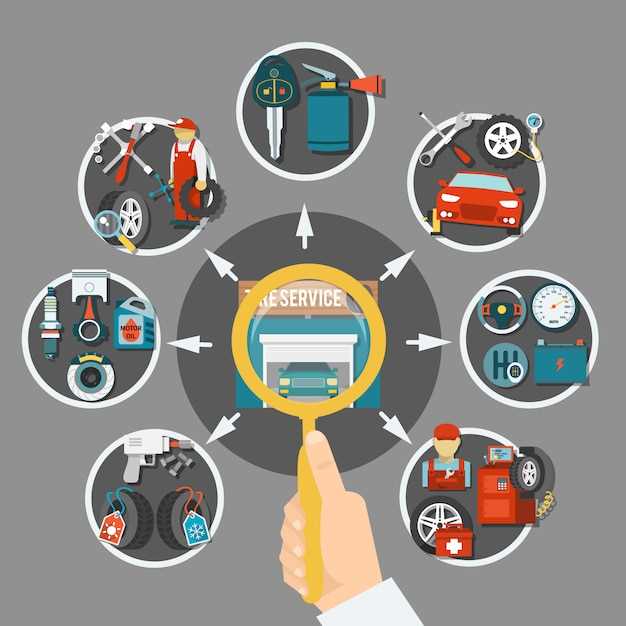
Ensuring that your vehicle’s brakes are in optimal condition is crucial for safe driving. The brake system is one of the most vital components of your car, as it directly impacts your ability to stop quickly and efficiently in emergencies. Regular maintenance not only enhances performance but also extends the lifespan of your brakes, ultimately saving you both time and money on repairs.
A common misconception is that brake maintenance is only necessary when you hear squeaking or grinding noises. However, proactive care is essential to prevent more serious issues down the line. Routine checks can help detect potential problems before they escalate, ensuring your brakes function effectively when you need them the most.
This article will provide you with essential tips on how to maintain your vehicle’s brakes. From understanding the various components of the braking system to identifying warning signs of wear, you’ll gain valuable insights that will help keep you and your passengers safe on the road.
Signs Your Brakes Need Immediate Attention

Brakes are a critical component of your vehicle, ensuring safety during driving. Recognizing the signs that indicate your brakes may need immediate attention is essential for your safety and the longevity of your car. Here are some crucial warning signs to watch for:
1. Squeaking or Screeching Noises: If you hear a high-pitched squeak or screech when applying the brakes, it could indicate that the brake pads are worn down. A metal tab attached to the pads may be touching the rotor, signaling that replacement is necessary.
2. Grinding Sounds: A grinding noise when braking often means that your brake pads are completely worn out, and the metal backing is rubbing against the rotors. This damage can lead to further issues and requires immediate professional inspection.
3. Vibration or Pulsation: If you feel vibration or pulsing through the brake pedal, it may indicate warped rotors. This issue can affect your braking performance and should be addressed promptly.
4. Longer Stopping Distances: If you notice that your vehicle takes longer to come to a stop than it usually does, this could be due to worn-out brake pads, low brake fluid, or other brake system issues. Immediate attention is needed to ensure safe stopping power.
5. Warning Lights: Many modern cars are equipped with a brake warning light on the dashboard. If this light illuminates, it may signal a problem with the brake system, such as low brake fluid levels or other critical issues that require urgent assessment.
6. Leaking Brake Fluid: If you see puddles of fluid near your wheels, it may be brake fluid. Low fluid levels can severely impact braking effectiveness and should be investigated right away.
7. Pulling to One Side: If your vehicle pulls to one side while braking, this may indicate uneven wear on brake pads or issues with the brake calipers. This can lead to compromised stopping power, and prompt inspection is required.
Paying attention to these signs is crucial for maintaining the effectiveness of your brakes. If you experience any of these issues, consult a professional mechanic as soon as possible to ensure your safety on the road.
Step-by-Step Guide to Inspecting Brake Components

Regular inspection of brake components is crucial for maintaining safety while driving. This step-by-step guide will help you perform a thorough inspection of your vehicle’s braking system.
Step 1: Gather Necessary Tools
Before you begin, collect the necessary tools: a jack, jack stands, a lug wrench, a socket set, and a flashlight. These tools will aid in safely accessing the brake components.
Step 2: Lift the Vehicle
Using the jack, lift the vehicle and securely place it on jack stands. Ensure that the vehicle is stable and avoid working under it if it is only supported by the jack.
Step 3: Remove the Wheel
With the lug wrench, loosen and remove the lug nuts from the wheel. Carefully take off the wheel to expose the brake assembly.
Step 4: Inspect Brake Pads
Examine the brake pads for wear. Ideally, the thickness should be at least 1/4 inch. If they appear thinner, it’s time to replace them. Also, check for any uneven wear patterns which may indicate issues with alignment or calipers.
Step 5: Check Brake Rotors
Inspect the brake rotors for any signs of damage, such as grooves, cracks, or discoloration from overheating. If the surface feels uneven or scored, resurfacing or replacement may be necessary.
Step 6: Examine Brake Calipers
Look for any leaks around the calipers and ensure that they are securely mounted. Squeeze the brake lever to see if the caliper moves freely. If not, it may require lubrication or replacement.
Step 7: Verify Brake Fluid Level
Check the brake fluid reservoir for adequate fluid levels. Low fluid may indicate a leak or worn pads, as they create more space in the caliper.
Step 8: Inspect Brake Lines and Hoses
Examine all brake lines and hoses for cracks, leaks, or corrosion. Ensure that they are securely connected. Any signs of wear should be addressed immediately to maintain safety.
Step 9: Reassemble and Lower the Vehicle
Once inspections are complete, reattach the wheel. Tighten the lug nuts in a crisscross pattern to ensure even pressure. Lower the vehicle back to the ground and perform a final check on the lug nuts’ tightness.
Step 10: Test Drive
After maintenance, take a short test drive in a safe area to ensure that the brakes are responding properly. Listen for any unusual sounds and pay attention to how the brakes feel.
Regularly inspecting brake components not only enhances vehicle performance but also significantly contributes to overall safety on the road. Make it a routine part of your vehicle maintenance to ensure a safe driving experience.
Best Practices for Routine Brake Maintenance
Maintaining your vehicle’s brake system is crucial for ensuring safety on the road. Regular inspections and timely maintenance can prevent potential failures and accidents. Here are essential practices for optimal brake maintenance:
1. Inspect Brake Pads and Shoes
Regularly check the condition of your brake pads and shoes. Replace them if they are worn down to 3mm or less. Ignoring this can lead to decreased braking performance and potential damage to the rotors.
2. Check Brake Fluid Levels
Monitor your brake fluid levels consistently. Low fluid can indicate leaks or other issues within the braking system. Always use the manufacturer-recommended brake fluid type when topping off.
3. Listen for Unusual Noises
Be aware of any unusual sounds while braking, such as squeaking or grinding. These noises often signal that brake components need to be checked or replaced to maintain safety.
4. Examine Brake Lines and Hoses
Regularly inspect the brake lines and hoses for any signs of wear or leaks. Damage to these components can dramatically affect braking efficiency and should be addressed immediately.
5. Test the Brake System
Periodically perform a brake test in a safe environment. Check for responsiveness and feel when applying the brakes. If the pedal feels soft or spongy, further investigation is required.
6. Schedule Professional Inspections
Consider having a professional brake inspection at least once a year or as recommended in your vehicle’s manual. Professionals can identify issues that may not be visible during casual checks.
7. Avoid Overheating
Be mindful of your driving habits. Avoid aggressive driving and heavy braking, which can lead to brake overheating. This can cause brake fade and reduce effectiveness, compromising safety.
8. Keep Your Wheels Clean
Ensure that your wheel rims are clean and free from brake dust and debris. This simple maintenance task can help in identifying any issues with brake performance early on.
Implementing these best practices for routine brake maintenance will significantly enhance your vehicle’s safety and reliability on the road. Prioritize regular checks and address any concerns promptly to ensure safe driving conditions.



